This is part three in our three-part series on creating a resilient garden ecosystem. In this blog post we look at some design techniques to help your garden landscape become a low maintenance resilient foodscape!
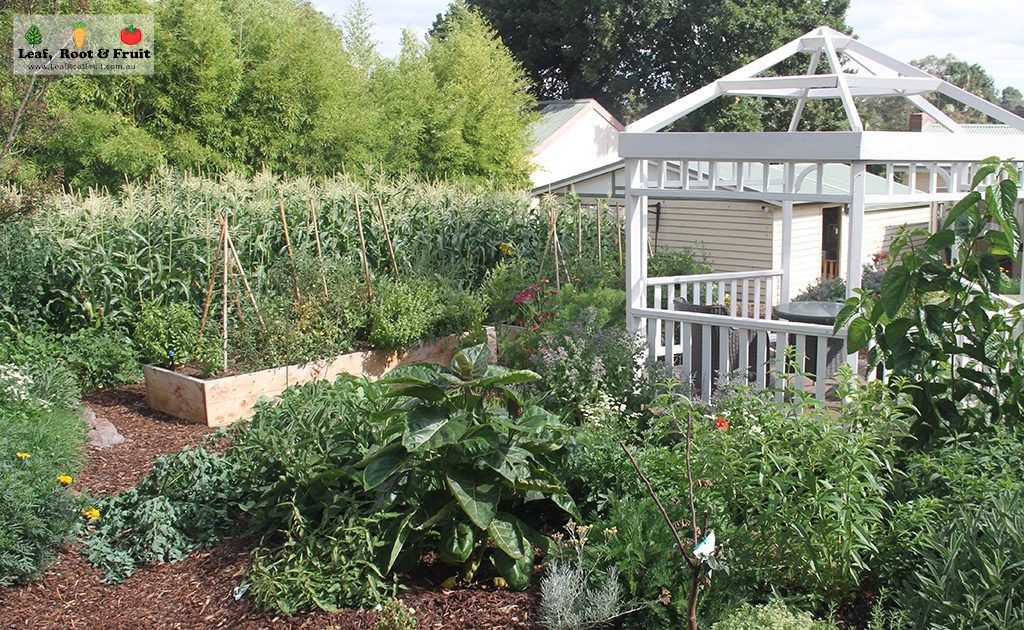
Avoid large patches of monocultures and rows in the garden
If you plant a long row or mass planting of broccoli, it will be particularly attractive to white cabbage moth and attract lots of them. If the seedlings are next to each other, then the caterpillars don’t have to spend much energy getting from one plant to the next.
But if you plant your broccoli plants randomly throughout the garden then the sulphur smells may be masked by other plants. If the seedlings are small, then it takes more time and energy for the caterpillar to get from one plant to the next. It is then more likely to get picked off by a bird or a good bug on the way.
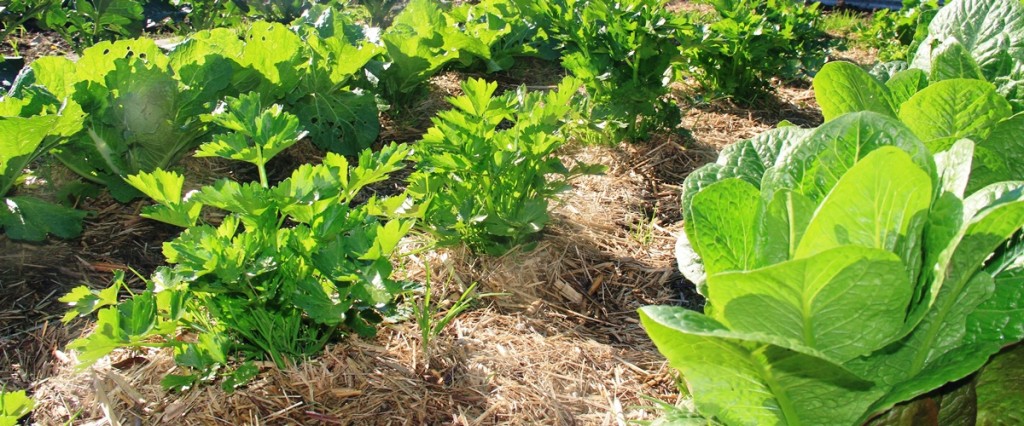
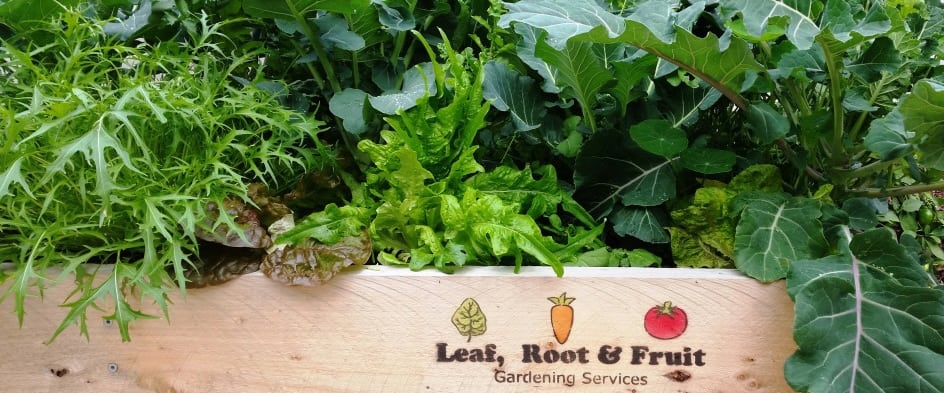
Avoid the traditional plantings of lots of rows of veggies or planting lots of the same thing in the one space.
Physical Deterrents
Netting can be great for preventing pests from accessing your crops. Fine insect netting can be used to prevent white cabbage moth from laying their eggs on the brassicas. However you need to be proactive and install the netting before the white cabbage moth becomes a problem. Once the moths have laid a few eggs on your plants, you will just contain the problem inside the net.
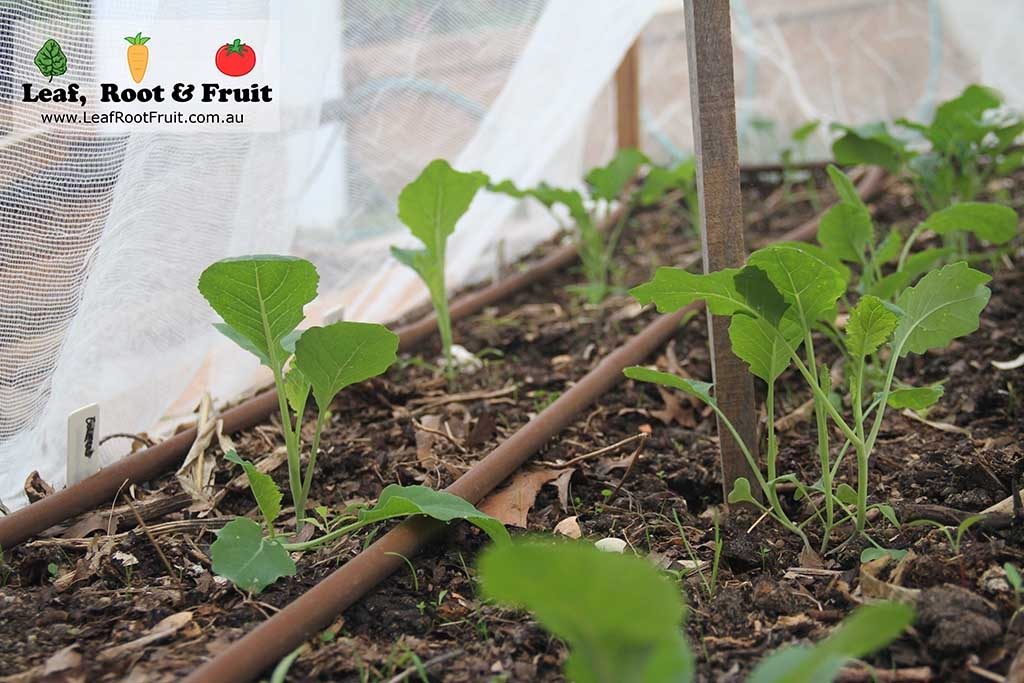
Larger nets can be draped over fruit trees to prevent access by possums, birds and fruit bats. This can be fiddly and time consuming. An alternative is a large netted enclosure, or anti-aviary to protect your crops.
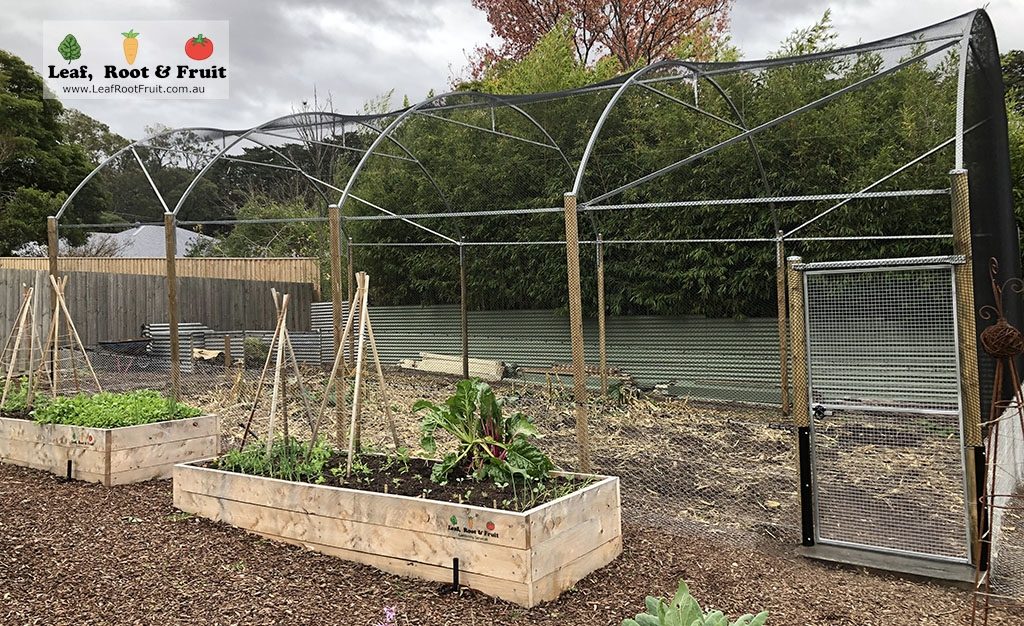
Clever use of paths in the garden
Fences are possum highways. Often hedges and trees planted up against a fence are never allowed to grow higher than the fence itself. This is because the possums keep travelling along the fence and snacking on the plants as they wander past.
We have had great success with adding a path between the fence and trees. You need a minimum gap of one metre (ideally more) between the tree canopy and the fence. A path along the gap enables you to tend your fruit trees and pick the fruit. Possums don’t like to come down to ground level, as they are at risk of predation So, usually they won’t access your fruit trees if they must climb down and cross the path.

Incorporating such a path into smaller gardens can be difficult and this might reduce the overall number of trees. However, at least you will hopefully get good productivity from those fewer trees that you plant
Water Features
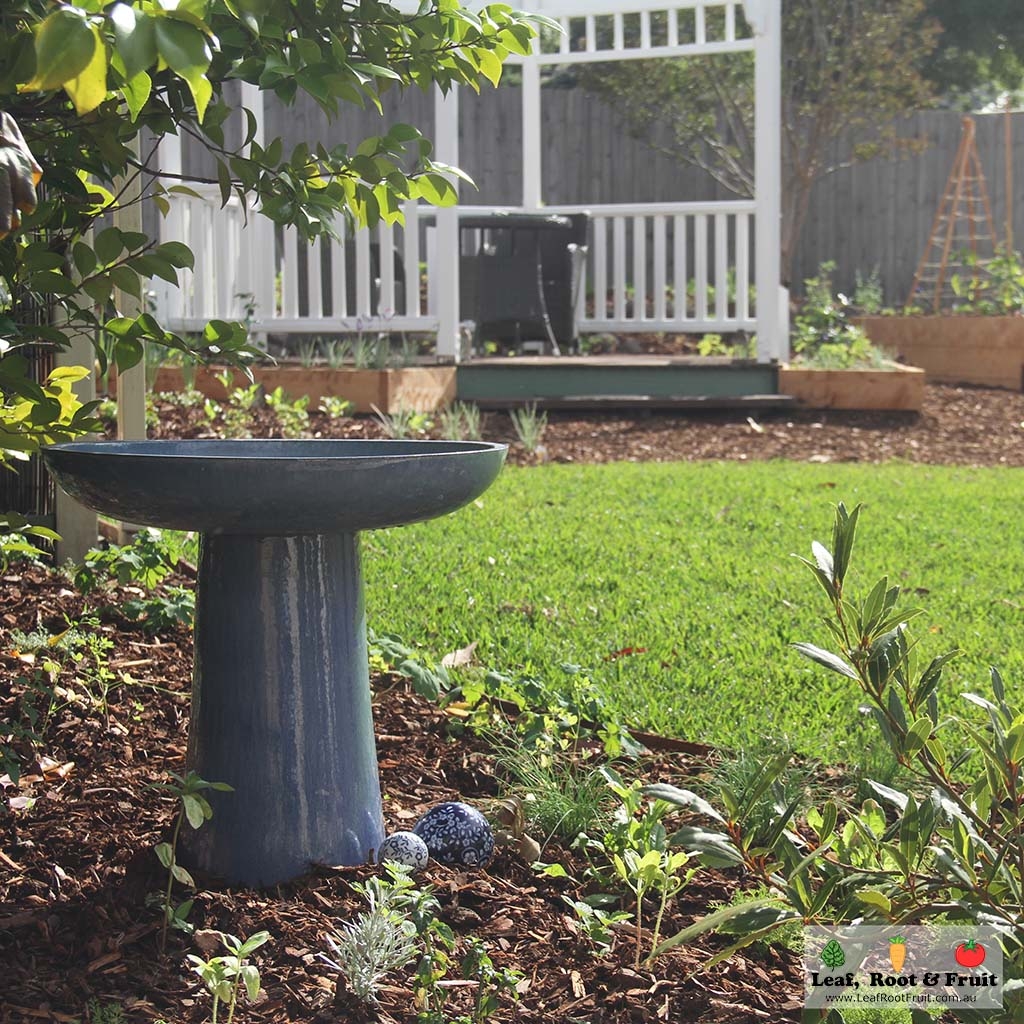
Most beneficial insects and wildlife need access to water at some stage of their life cycle. Adding water features to your garden is a fantastic way to encourage biodiversity. Frogs are great at eating smaller insects and a pond or “frog bog” is a great way to provide habitat for them. Smaller gardens (or those frequented by small children) may need to resort to a small bird bath or shallow dish.
Remember to add some structure such as stones or logs to enable small, stranded wildlife the ability to climb back out of the water feature. This will avoid an accidental drowning.
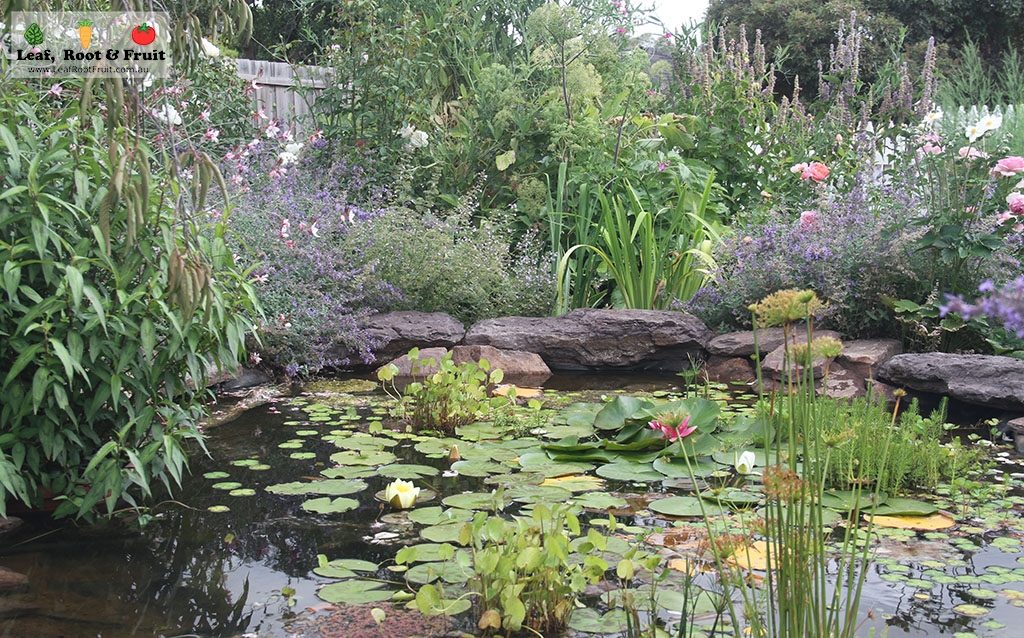
Mosquitos breeding in a water feature can be a problem. Adding a pump to prevent the water going stagnant can help stop this. Mosquitos won’t lay their eggs in moving water. Adding small fish to the aquatic ecosystem can help control mosquito larvae– although most fish are also likely to stop frogs from breeding up in the pond.
Lawn
Surely it’s sacrilege for an edible gardener to have a lawn?!
Lawns are useful spaces for all sorts of things, such as playing ball games, having picnics and also creating great ecosystems.
The ideal lawn is one full of weeds! Weeds such as clover and dandelions have flowers, which encourages the predatory insects. A long, lush, lawn full of weeds creates great wildlife habitat. When you haven’t mown your lawn for three or four weeks in spring or autumn it will be swarming with bees and bugs.
Which is great: But at some point, we do need to mow it.
So spare some thought to how you will manage your mowing. Mowing destroys all of that fast-growing habitat, and food for the good bugs, that are breeding up. If you can, mow the front lawn one week, and mow the back lawn a couple of weeks later. Ideally mow the lawn in sections or rows, over several weeks. You could even mow half the lawn and then the other half a fortnight later.
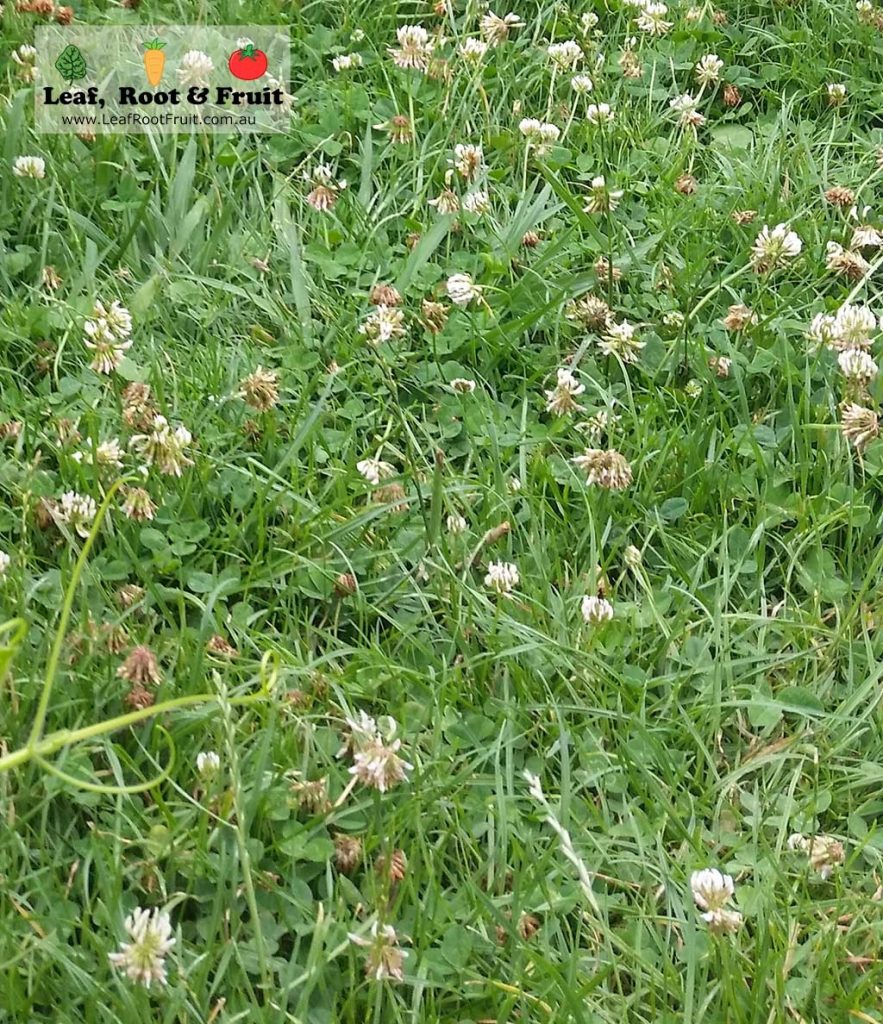
Habitat Nesting Boxes
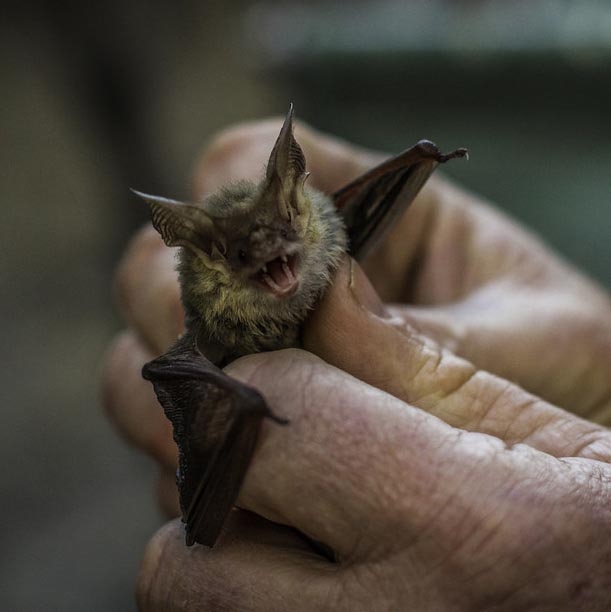
A micro bat will eat its own weight in insects every night. Many of the pest moths such as codling moths are nocturnal and flying around at the same time as the microbats. Encouraging microbats into the garden can help manage outbreaks of this pest for you. The best way to do this is with a microbat nesting box. The nesting box design requirements are quite specific and there are several commercially available boxes to choose from. There are also some great plans for DIY options available on the internet.
Rocks and other Wildlife Habitat
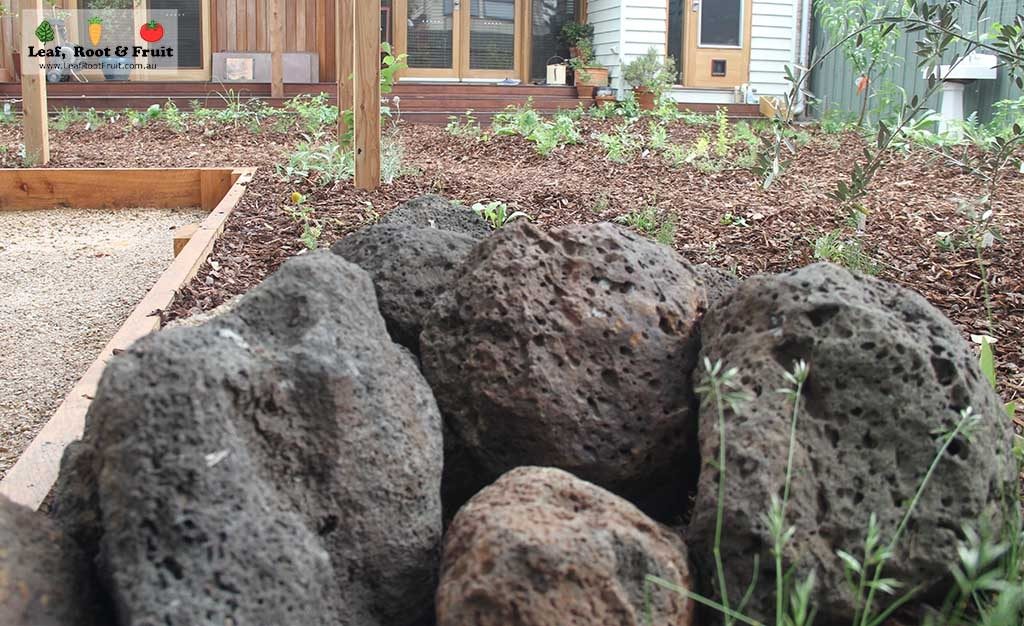
Piles of rocks, bricks and other rubble are not “junk”… just rebrand them as “wildlife habitat”! This provides places for spiders, skinks, lizards and frogs to live. Grasses and strappy plants such as kangaroo paw or sugarcane are also favoured by lizards and other beneficial wildlife.
Timing of Planting
Timing of your planting can be the difference between success and failure with some of your veggie crops. Brassicas such as broccoli are traditionally planted in March by Melbourne based gardeners.
When I first started the LRF business, I followed this wisdom and planted our clients’ brassicas out in March. Inevitably, they’d all be destroyed by the white cabbage moth when we came back a few weeks later.
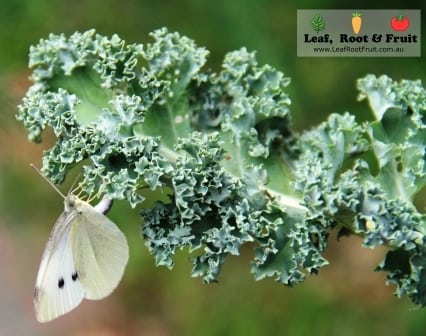
We would plant a second crop in late April or early May, and this secondary crop would always survive and thrive. The reason that this happens every year, is because the white cabbage moth isn’t as prevalent in April or May.
Most of the pest bugs such as cabbage moth, whitefly, aphids etc seem to have population explosions in spring and autumn. They prefer weather that is humid and mild, with temperatures in the mid to high 20oC’s.
Most of Melbourne’s rainfall occurs in spring and autumn. That rainfall promotes flushes of new growth, in veggies, lawns, roses and all sorts of plants. In turn this provides lots of tender new food for the bugs. By understanding the seasonality of pest populations, you can avoid planting new seedlings when they are most likely to be susceptible to pest attack.
Avoiding Sprays and Pesticides (even organic ones!)
As we mentioned in Part One of this blog series, pesticides are very disruptive to the natural balanced ecosystem of your garden. Pesticides kill the beneficial insects as well as the targeted “bad bugs”. This means, that the population of all the bugs in your garden will crash and you can’t obtain a balanced population dynamic. Remember: all bugs are good, because even pest bugs are food for good bugs.
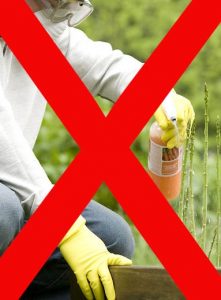
Relocate Bugs – Don’t Squish Them!
Caterpillar” seek and destroy” missions should be replaced with “seek and relocate” missions. Whenever I find caterpillars that are causing damage I relocate them to the lawn or other more resilient plants. At the time of relocation, the caterpillar will often have already been predated on by parasitic wasps. Killing the caterpillar at this stage also kills the wasp larvae. By relocating the caterpillar, the wasp can complete its lifecycle and its wasp offspring will go on to control even more caterpillars.
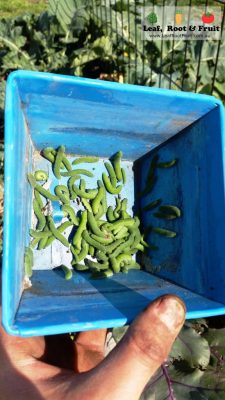
Fertilizing as little as possible (but if so, add a little, often!)
Most commercially available fertilizers list their NPK ratios. These stand for N = Nitrogen P = Phosphorous and K = Potassium.
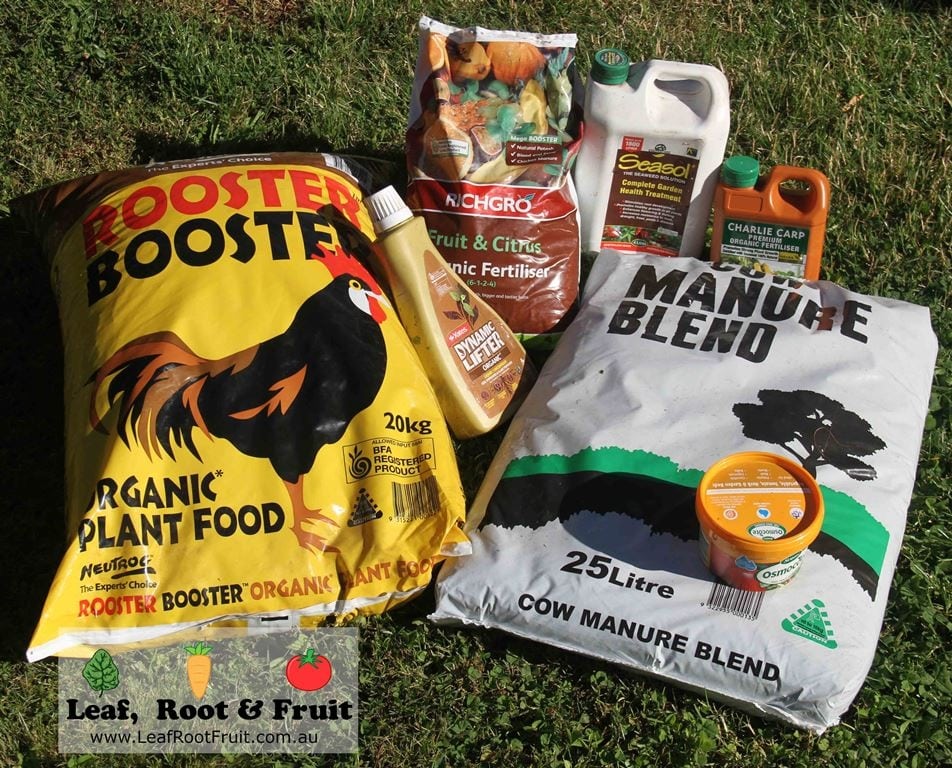
Fertilizers high in nitrogen create rapid flushes of foliage growth. Plants subjected to high nitrogen fertilizers grow very fast (as most of our industrialised crops are grown). In doing so, they don’t have the opportunity to incorporate all the other minerals the plant needs, such as calcium to build strong walls. Feeding plants a strong fertilizer is akin to feeding them junk food. This in turn creates plants that as food are not very nutrient dense (see our blog post on measuring nutrient density of food).
Plants lacking nutrient density are comparatively soft, and easy for the insects to eat. The plants can’t easily deploy their natural chemical defences.
Instead of dosing your plants with large doses of nitrogen, feed them a little often. Better still, feed them using a well-made compost. Focus on growing plants slowly so they can be more resilient, stronger, and more nutrient dense plants. This helps them resist insect attack a lot better and makes them healthier for you to eat!
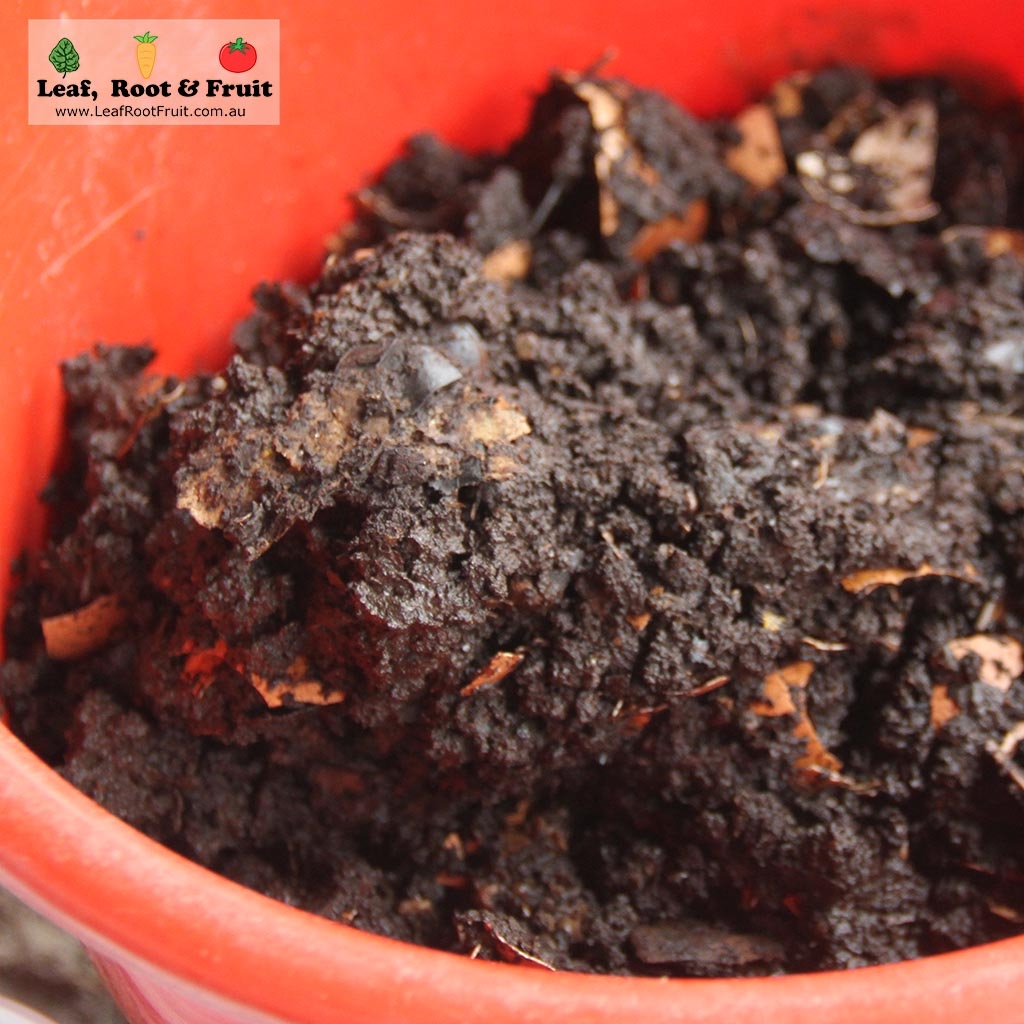
Edible Forest Gardening
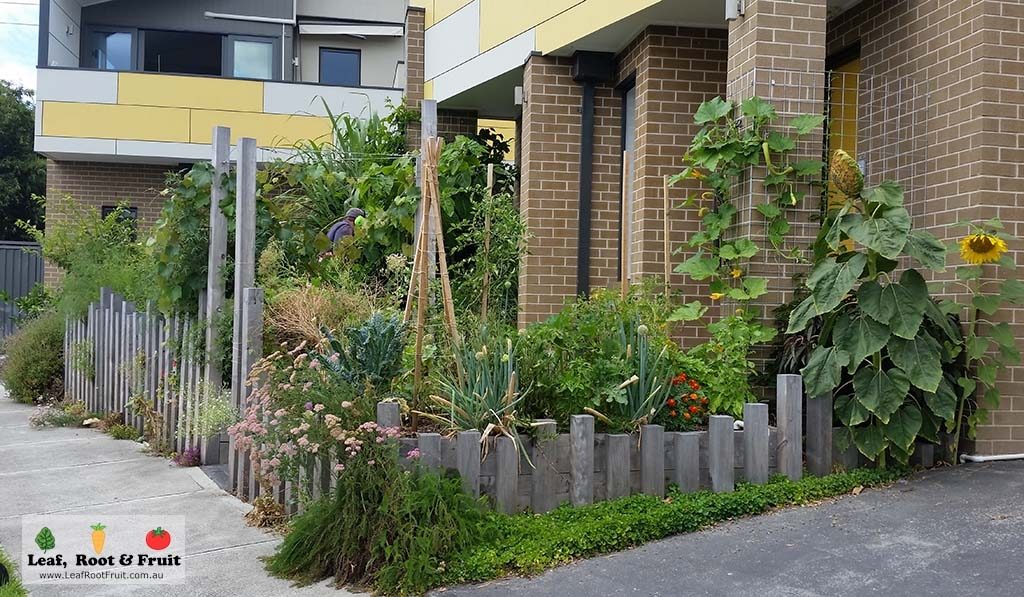
Edible forest gardening is the ultimate in producing food, whilst keeping in harmony with nature. It involves using perennial plants and growing things together to create a resilient garden ecosystem. Think of it a bit like companion planting en masse. You can read more about it on our dedicated Edible Forest Gardening website page.
Scented Plants & Trap Crops
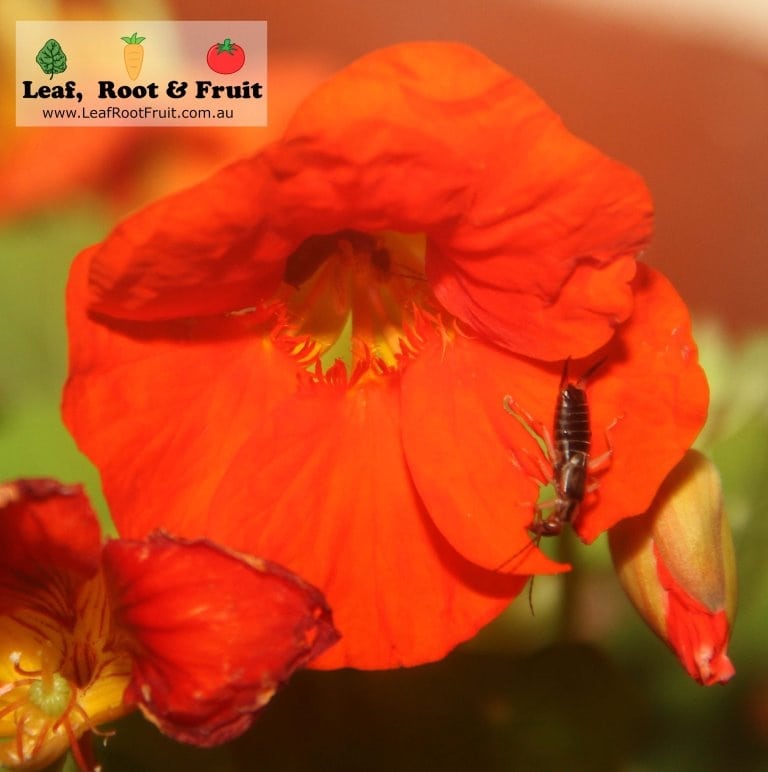
Some plants produce strong scents that may mask the smell of your tasty productive plants. Possums seem to hate nasturtiums, so these can be great for hiding seedling plants among them until they become established. Chives and other allium plants may confuse aphids and other predatory bugs from locating your tasty strawberries.
Other plants are considered to go one step further and act as trap crops. This is because they may be preferred by the pest species over your tasty produce. Not all sacrificial plants are trap crops. Some simply exist to feed the pests in preference to our productive plants. Examples include Land Cress and Nasturtiums.
Building Diversity into Small Space Gardens
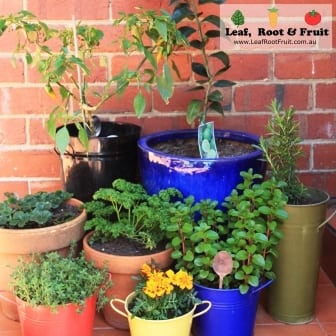
Building diversity into small spaces is quite a challenge, but the more diversity you have, the more resilient they will be.
Addition of flowers and habitat is just as important in small spaces. Utilising small insect hotels can be a great way of neatly adding wildlife habitat.
You may also need to invest more time in manually controlling pest outbreaks. This may be through activities such as inspecting and removing caterpillars from your precious plants.
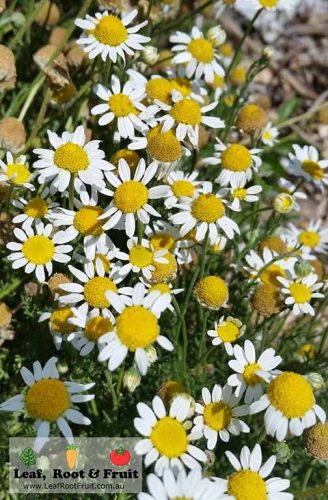
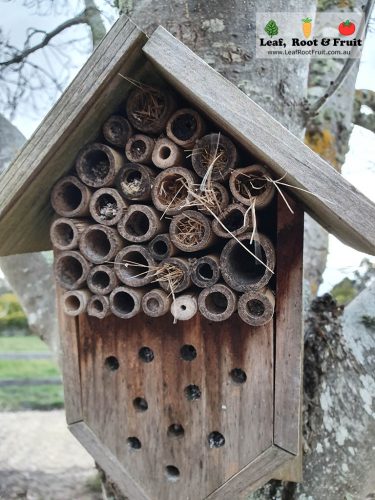
Buying in Beneficial Insects (why not to bother)
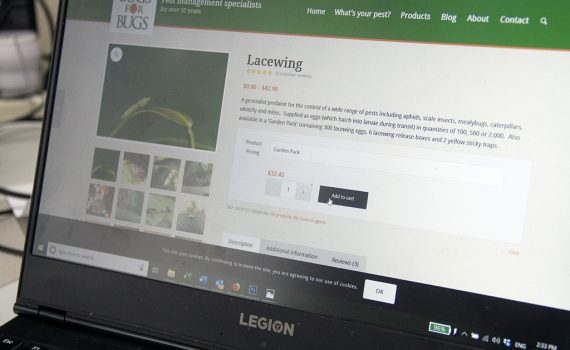
Yes, you can actually buy beneficial insects such as ladybugs and lacewings! But before you race out and stock up your garden full of good bugs it might be worth considering a few things.
These insect products are design for use in enclosed spaces such as greenhouses and indoors. Under these circumstances the ecosystem is enclosed and therefore they wouldn’t naturally find their way into the space. If your garden is outdoors, then the “good bugs” can certainly find their way there.
Have you enough food for these insects for all of their lifecycle? Usually, there’s plenty of pests for them to eat in the larvae stage, but do you have enough flowers for the adult stage?
What’s to stop them flying away to your neighbours’ garden? How will you keep them in your garden?
Instead of spending money on beneficial insects, you are probably better off investing time and money in growing more flowers and creating an enticing habitat. These beneficial insects already exist in your local landscape. You don’t need to buy them.
Build it and they will come!
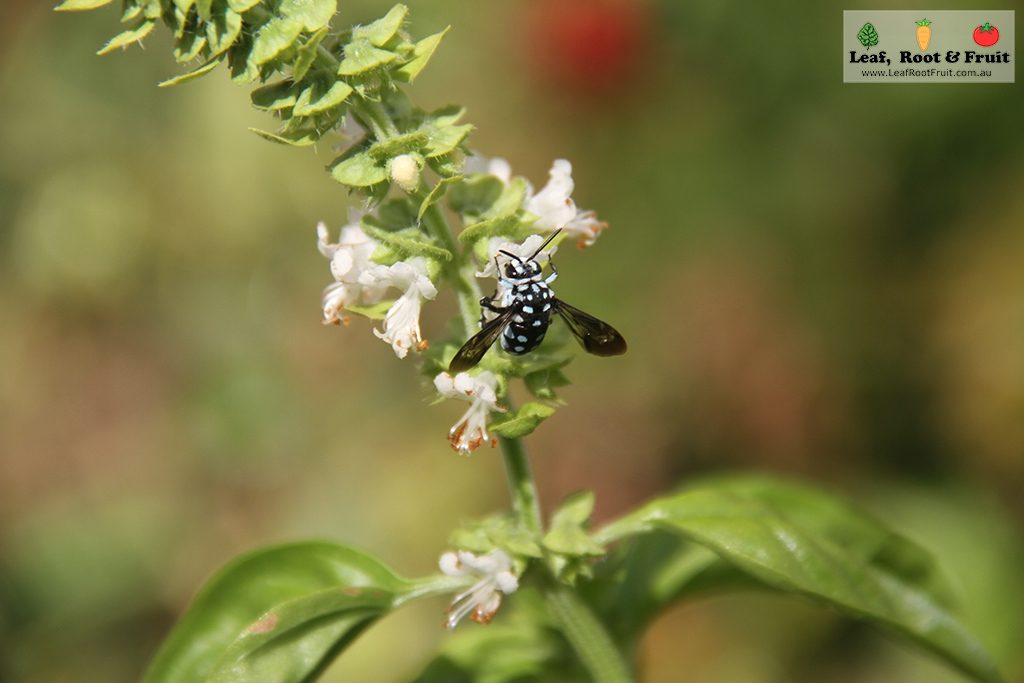
This is Part Three in a three part series on Garden Ecosystems. The other two parts are:
Part One: Pest Predator Dynamics and Balance
Part Two: Attracting Beneficial Insects into the Garden
Most of the images of gardens in this blog post are of gardens we have designed and implemented for our clients.
If you would like further information on garden ecosystems, then please sign up to our Science of Edible Gardening Workshop Series. The April workshop (repeated annually) in the series focuses heavily on population dynamics and pest predator interactions.


I’m sure you know that not all insects are “bugs” (hemiptera) – I can’t think of any beneficial “bugs”, although maybe I don’t remember all my entomology. I have only just come upon your site and find it very interesting, informative and laudable. Although Melbourne born and raised,
I’m now an “interstator”, so I will have to adjust your information suitably for Adelaide. Great stuff.
Thanks for pointing that out Ken. Indeed you are correct. It’s why I often refer to “Good Bugs” and “Bad Bugs” in quotation marks. I’m just reflecting popular modern language back at society.
Good Luck & Happy Gardening!
Excellent and easy read for this beginner. Thank you!
Glad you found it useful Valerie!